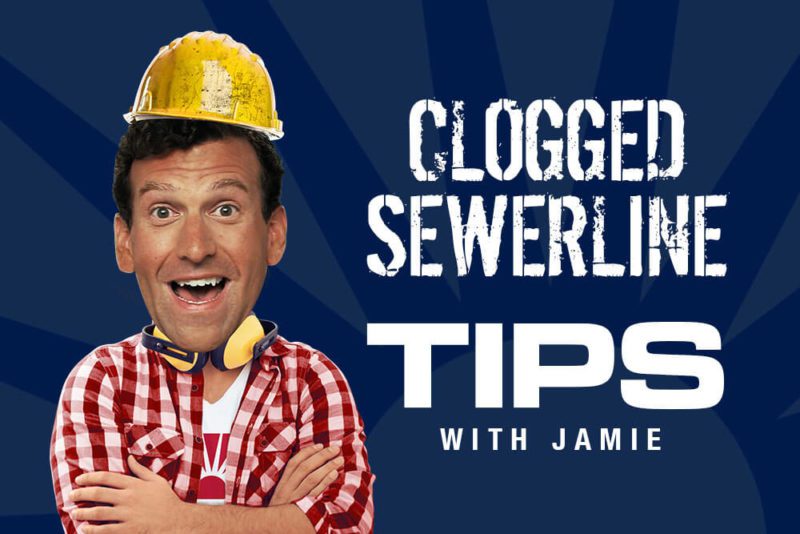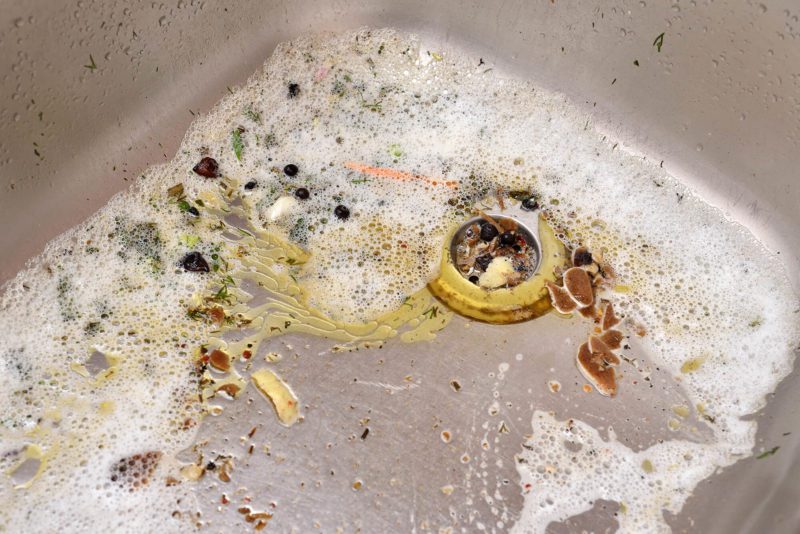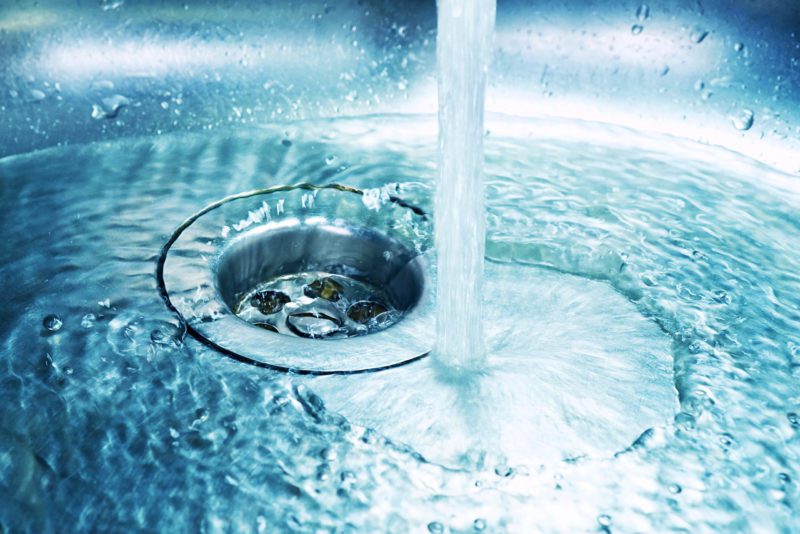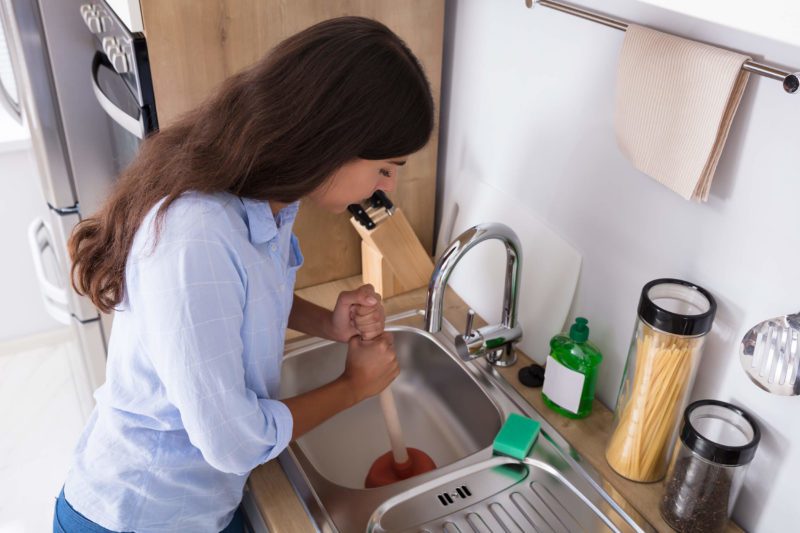Blog
Dirty Jobs: Tips to Avoid a Clogged Sewer Line

Anything you can do to avoid a clogged sewer line is easier and more pleasant than cleanup after one happens. Few plumbing problems are more disruptive to normal household life than a sewer clog. It’s a major cause of property damage as well as a health issue. Raw sewage is a biohazard. You need professional restoration services to decontaminate the premises and enjoy a safe indoor environment.
Modern urban homes depend on sewer pipes to remove wastewater. If those pipes aren't working properly, it can cause a stinky, potentially hazardous situation. The sewer pipes at the street are usually the sanitation department's responsibility.
The pipe that runs from your house, however, is your responsibility. Homeowners should take necessary precautions to avoid sewer clogs.
While a sewer pipe backup is typically sudden, there are warning signs and prevention tips. Here are three ways to avoid sewer clogs and their messy aftermath. Finally, let’s review signs your sewer line has a clog, how pipe belly happens, and the cost of dealing with clogged sewer lines.
How to Avoid a Clogged Sewer Line
- Don’t put or flush stuff down the drain that doesn’t belong
- Landscape carefully and monitor older trees and shrubs
- Get a sewer inspection
Watch What Goes Down the Drain
What Can Cause a Main Sewer Line Clog In the Kitchen:
One of the main sewer-clogging culprits is FOG, fats, oil and grease. In fact, according to the EPA, about 60 percent of sewer clogs are FOG-related. Inside the sewer pipe, FOG hardens and gradually obstructs water flow. Collect fats, oil and grease in containers and throw out with the regular trash. Never pour them down the drain.
What Can Cause a Main Sewer Line Clog In the Bathroom:
Toilet paper is about the only thing you should be flushing aside from normal human waste. Feminine napkins, tampons, diapers and paper towels should not go down the toilet.
Send any other paper or fabric product out with the regular trash. Disposable wipes, used paper towels, cotton balls — all of these may form a future clog. Even the so-called "flushable" wipes don't degrade fast enough to enter the sewer pipes.
“Not One Single Wipe”
In fact, a study released by Ryerson University April 9, 2019, tested single-use wipes for “flushability.” The report ‘Defining “Flushability” for Sewer Use’ came from Ryerson’s Flushability Lab at Ryerson Urban Water and includes testing results for 101 single-use products.
Twenty-three were labeled “flushable” by the manufacturer and yet results showed not one single wipe fell apart or dispersed safely in the sewer system test.
This lack of breakdown clogs household plumbing systems before creating problems for municipal sewage facilities. In addition, they’re terrible for the environment.
Household Projects
Don't flush oily, thick or viscous liquids. Paint, oil, grease or thick chemicals may go down with the first flush, but if they hit any obstructions in the pipe itself, a clog can form. Many of these substances may cause damage to the pipe itself. This increases the possibility of leaks or joint problems in the future.
Landscape Carefully Around Sewer Systems
Tree roots easily penetrate pipe joints, and as plants grow, roots expand, causing damage to the pipe itself. This causes clogging or leaking.
If you're moving into a new home, consider having the pipes inspected before making the final decision. It's also a good idea to schedule an evaluation of your current home every few years to check for problems.
If you plan to sell, schedule one. It’s better to know now. This way you can handle it now and prevent a slowdown in the deal or withdrawn offer. Or, depending on the nature of the situation, it helps you price the property appropriately.
For now, landscape smartly. Don’t plant trees or large shrubbery close to the underground path of your sewer pipe. These plants send feeder roots into sewer pipes, particularly in older pipes with joints. Tree root infiltration is a major cause of sewer clogs.
Certain species of trees and shrubs have more aggressive root growth, such as Redbuds and Weeping Willows. They’re more likely to invade a sewer pipe while others are considered “sewer safe.” Before planting, consult a local nursery to determine the best type.
If an evaluation reveals tree root intrusion, your plumber can discuss effective ways to clear the pipe before a blockage occurs.
Related blog: Plumbing Problems: Tree Roots in Sewer Line
Schedule a Professional Inspection
Because your sewer pipe is underground, only a qualified plumber with technology like video evaluation cameras can tell what’s really going on inside. Inspections every few years help avoid sewer clogs from these common sources:
Eliminate the element of surprise. What you don’t know about what’s going on inside your sewer can cause problems. Schedule a sewer evaluation every three to five years. A qualified plumber threads a video camera into the pipe and visually inspects the entire span. There he or she detects clogs, tree root infiltration, collapsing pipe segments and other common problems.
Collapsing pipe segments are a problem, particularly with older residential pipes. Some older homes have clay pipes.
Many older homes built between the 1860s and 1970s used something called Orangeburg pipe. A combination of layers of wood pulp and pitch, Orangeburg was used for a long time because it was inexpensive and worked well. Over time, however, they deteriorate or suffer infiltration from tree roots.
If an evaluation reveals a deteriorating pipe, options include repiping with continuous plastic pipe without joints and withstands aging. This can usually be done without excavating your yard with what’s called “trenchless” or “no-dig” sewer repair.
How Much Does it Cost to Unclog a Sewer Line
Homeowners in Cincinnati and Northern Kentucky have several options to resolve clogged sewer lines. Cost depends on which method and how much time the clog requires. We recommend every process begins with a camera inspection.
This helps our licensed plumbers present the most informed range of solutions for you. These camera inspections show what exactly is in the pipe, if there’s cracks or breaks, or even if there’s a reason to notify the sanitation department.
In many cases, the camera inspection is complimentary with a sewer service visit. In addition, we frequently offer plumbing and sewer repair discounts on our Special Offers page.
Least Expensive: Snaking or Rodding
More Thorough: Hydro Jetting
Heavy Duty: Sewer Line Repair or Replacement
If you need any more reasons to avoid sewer clogs, consider this fact: most standard homeowner’s insurance policies specifically exclude coverage for damage and cleanup if raw sewage backs up into your home due to a clog. The homeowner gets stuck with the entire bill.
According to the Civil Engineering Research Foundation, sewage backups are increasing at a rate of 3 percent annually — mostly residential cases. Stay in front of the problem and call a licensed plumber before it’s too late.
How Do You Know if Your Sewer Line is Clogged
Here are the most common signs of a clogged sewer line:
- “When I flush the toilet, water backs up in the shower or tub.”
- “More than one plumbing fixture is clogged.”
- “Toilet gurgles when I run water in the bathroom sink.”
- “All the drains seems to be running slower than before.”
- “I’ve tried drain cleansers but drains in the house still run slow.”
- “Toilet overflows or water backs up in the shower or tub when the washing machine drains.”
Toilets are usually the first indicator of issues. With the most direct route to your sewer lines, toilets also have the biggest drain line. Therefore, if a clogged sewer line is forming, it usually manifests in toilet “behavior” or function.
How Serious is Sewer Pipe Stomach
Belly in a sewer pipe is a common problem for homeowners. Essentially, sewer pipe stomach, or “bellies” are low spots or sags in sewer lines. Most sewer lines slope down, using gravity to carry wastewater from the house. This prevents the efficient flow, because water and sediment accumulate in the “belly.” This leads to backups and other problems.
What Causes Bellies in Sewer Lines?
Most often, it boils down to poor installations and bad planning. Proper sewer installations depend on correct slope, the right materials and good bedding compaction. There are cases, however, where all these were done right, but natural factors get in the way. These include fluctuations in the soil from earthquakes, mature tree roots, and extreme weather changes from heat, rain or cold.
Call Apollo Home for Sewer and Plumbing Help
We’re eager to share our plumbing and sewer line expertise. We’ve learned a lot in our more than 100 years and gladly use it to help you when you need it. If any of these signs of a clogged sewer line sound familiar, call us or click to schedule an inspection.
Preventive measures are worth a mint compared to the consequences of sewer backups. Save your time, money, home, possessions and your peace of mind with preventive plumbing service.
Click Here to Schedule a Plumbing Service, Repair or Installation
Our friendly plumbers are licensed, insured, and background-checked for your peace of mind. They receive ongoing certified training to repair or service any sewer clog issue.
Apollo Home plumbers also handle issues with clogged toilets and sinks, garbage disposals, slow drains, leaky pipes and water heaters.
We travel throughout Cincinnati, Ohio and Northern Kentucky to serve homeowners. Need emergency plumbing repair? If you have a drain back up, sinkholes in your yard or any plumbing emergency, call us 7 Days a week.
If you’re curious about sewer line replacement let us know! We’re happy to provide a free estimate.









